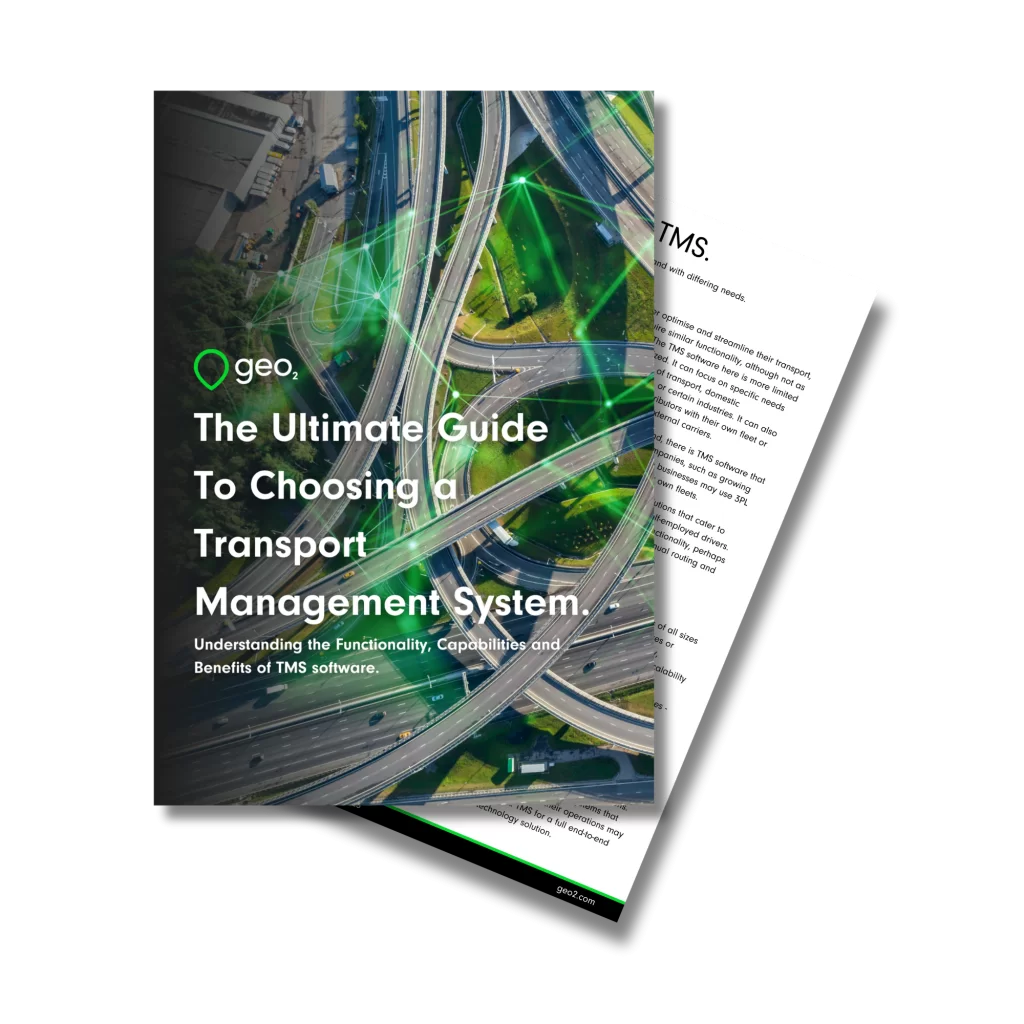
Understanding Signed For Delivery: A Comprehensive Guide.
Introduction.
Shipping a package or an important document can be a nail-biting experience. Especially when it’s something valuable, time-sensitive, or legally crucial, knowing that it’s reached its destination safely can provide peace of mind unlike anything else. This is where ‘Signed for Delivery’ or ‘Recorded Delivery’ comes into play. In our comprehensive guide, we’ll unpack everything you need to know about this pivotal part of the shipping experience, learning about its ins and outs, costs, and when it’s an essential addition to your delivery method.
Need help choosing a TMS?
Download the Free Guide Now.

Table of Contents.
Benefits of Signed for Delivery.
Security and Proof of Delivery.
At its core, Signed for Delivery is all about security. By requiring the recipient’s signature, this service ensures that the package is not only delivered but received by the intended person. This means that there’s a person’s name and the time of day can be recorded as proof of the delivery, which can be invaluable in case of disputes or if you need to prove delivery for legal reasons.
Reducing the Risk of Lost Packages.
One of the most frustrating experiences is when a package seems to vanish into thin air. Using Signed for Delivery reduces this risk significantly. Once you get that green tick or confirmation that the package has been signed for, you can rest easy knowing it’s in the right hands.
Enhanced Customer Satisfaction.
For businesses, the added layer of security and tracking can enhance the customer experience. You offer a premium service that communicates the value you place on your customers and their items.
Table of Contents.
How Signed for Delivery Works.
It’s not as complex as it might seem. A mail carrier delivers the package and waits for the recipient or an assigned individual to sign for it. They can leave a slip in case the recipient is absent, but they will need to retrieve it within a specified period. If they don’t, the package will be returned to the sender or sent to a holding facility.
Differentiating Factors from Standard Delivery.
The major difference between signed for and standard delivery is the requirement for a signature. However, the dedication to tracking and secure handling throughout its travel is the other crucial factor. The package is handled with more care and diligence as it transitions from one party to the next.

When to Use Signed for Delivery?
For Valuable Items.
Jewelry, antiques, or high-value electronic goods are prime candidates for Signed for Delivery. This is especially important when the soon-to-be recipient might choose to contest arrival.
Legal Documents.
If you’re sending contracts, legal correspondence, or anything that might end up being used as evidence in court, Signed for Delivery is a no-brainer.
International Shipments.
Sending something across borders can be an even riskier business. International Signed for Delivery offers a premium level of tracking and accountability, giving your international sender and recipient peace of mind.

Signed For Delivery Cost.
The cost is on top of your normal postage fee, and it’s worth factoring this into the cost of the item. While it can seem a bit extra, the cost is less than the value if what you’re sending were to be lost without a trace.
What is the Cost of Signed For Delivery?
The cost varies based on the weight of the item and its class. For example, for UK delivery, a standard 1st Class Signed For service pricing starts at £2.82.
Do You Have to Sign for Special Delivery?
Special Delivery encompasses additional options, all of which require a signature upon delivery, but also ensure next day or a date of your choosing delivery. It is often used for highly urgent matters and is more expensive than Recorded Signed for delivery.
Do You Have to Sign for Passport Delivery in the UK?
For official passport delivery, yes, the recipient is required to sign for delivery. This ensures that the new passport does not fall into the wrong hands.
Comparison with Other Delivery Methods: Contrasting Features and Benefits.
Signed for Delivery contrasts with standard and expedited services mainly in terms of accountability and tracking. While you may pay more, you’re getting a service that is much more reassuring for both the sender and recipient.

Tips for Using Signed for Delivery Effectively.
Properly Packaging Items.
Always ensure your items are sufficiently protected. The signed-for service looks after the handover, but you’re responsible for getting it to that point unscathed.
Tracking and Monitoring Shipments.
Use any tracking tools available to you through your postal service, and ensure the recipient is aware of when to expect the package.
Addressing Common Issues.
From understanding when the recipient needs to be present to accept the delivery to preparing for any potential delay, being well-informed can save a lot of hassle down the line.
Conclusion: Signed for Delivery for Peace of Mind
Signed for Delivery is more than an optional add-on to your shipping experience. It’s a critical service that offers assurance and peace of mind. In a world where physical shipping can still be fraught with risks, taking that extra step to ensure a package is accounted for can be the best decision you make.
Every sender and recipient should consider its merits, not just as a means to receive a package but also as an investment in reliability and customer service. With this guide, you’re better equipped to utilize this option effectively, whether for personal or business shipping needs.






